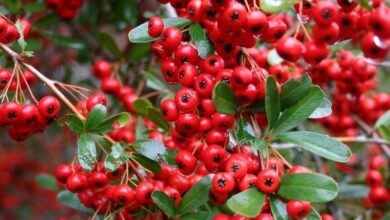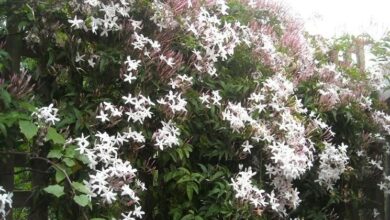Anti-mosquito geranium (Pelargonium citrodorum)

The Pelargonium citrodorum is a perennial herb and having stalks covered erect growth of leaves, with an expansion bush also branched. It is a plant highly appreciated for its splendid flowers and exquisite aroma.
This plant belongs to the Geraniaceae family and there are approximately 250 species, although few are almost always found.
characteristics

They can be grown in garden soil or in pots and are highly sought after for decorating terraces and balconies. They can grow to about fifty centimeters high and forty-five wide.
The leaves of this beautiful plant can be thick and green in color. It should be noted that when they are cut they give off the smell of their natural oils, which for many is compared to the smell of lemon and citronella, which results in the plant itself becoming a natural barrier for mosquitoes.
As for the flowers, really beautiful and decorative, they grow together and have five petals, two large and round upper ones and three elongated and narrow lower ones. Its color is a combination of pink and violet, presenting stronger tones in the center of its upper petals, giving it the appearance of a drawing formed by blurred lines.
This plant is in great demand and is normally used in gardens due to its splendid colors. Several species of the same family are usually mixed to obtain different textures and colors.
Pelargonium citrodorum cultivation
It can be grown in well-ventilated and bright places and does not require excessive care, but special care must be taken in summer, since it is not highly recommended that it be exposed to direct sun.
Regarding the ideal temperature for growing this plant, which is also known by the name of anti-mosquito geranium, it must be known that it can withstand temperatures perfectly well as long as they are not excessively cold.
However and in winter times the room or the space where it will be placed has to have a rather warm temperature.
It is important to emphasize that if you want it to flower throughout the year, it is necessary to provide all the light it needs for its full and normal development. In this case, a lamp could be used as a substitute for natural light and kept in a warm place.
Regarding irrigation, it is necessary to ensure that the water does not stagnate, because otherwise the roots of it could rot. The recommended soil to plant this type of geranium should be loose and with drainage facilities.
It also requires fertilizer so that it grows in the given time and its flowers can develop with the splendid and characteristic foliage of this plant. During the flowering time a liquid fertilizer should be applied every 15 days.
Pests
This plant is not spared from suffering from some type of pests, although one of the main risks it faces is rot, since in that case they could be attacked by fungi that could destroy the plantation.
In the case of insects, the most harmful for this plant is the butterfly or geranium borer. Once we see that our plant is damaged, we must remove the affected flowers as soon as possible.
They are also exposed to whiteflies, red mites, mealybugs and caterpillars, among others.
Pruning and reproduction

It must be pruned constantly, but during the winter it is even more conducive for new shoots to appear. Remember to use your own hands to remove faded flowers, as this will allow new flowers to appear in large quantities.
Old plants must be replaced each year, because younger plants bloom in greater numbers.
In fact and from spring to late summer they grow as long as the temperatures it needs for its development are consistent, that is, Pelargonium citrodorum needs warm temperatures to be cultivated, since it is not resistant to cold climates or temperatures below zero.
It necessarily needs protection during the winter, the least it can resist is between 8 and 10 degrees.
Its reproduction is extremely simple, since it does so through cuttings during the spring, summer or autumn seasons. It is advisable to take cuttings of approximately 10 centimeters, cut them below a knot and leave a couple of leaves at the top; let them dry and then proceed to planting.



